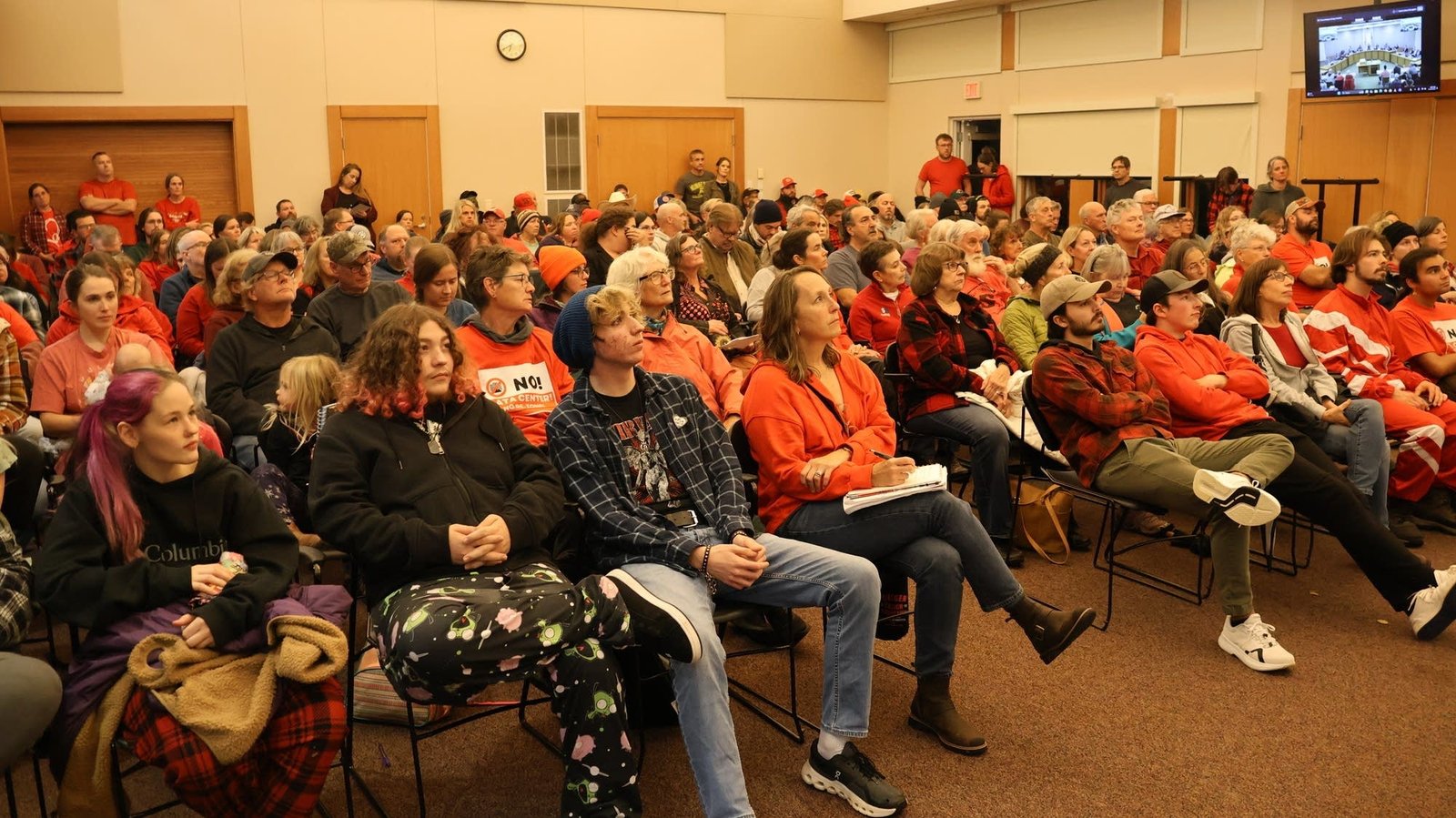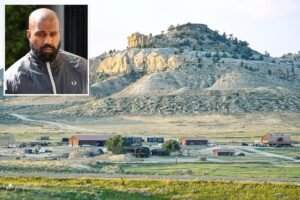
Tribes are struggling as the lockdown continues
Amelia Schiffer, ICT
The United States is 20 days into the third-longest federal government shutdown in history, and Indian Country is bracing for an unstable future, as reserve funding for many tribes may begin to dry up.
“People who have money set aside for this rainy day are going to see problems,” said Michael Staub of Cherokee & Muskogee, president and CEO of Seven Star Holdings. “We saw at the beginning of the shutdown that many tribes learned from 2018 and made some adjustments to their budgets, but now we are entering one of the longest shutdowns in history, and unless the Senate makes a significant change today or tomorrow, you will start to see heavier impacts.”
On October 20, the US Senate failed for the eleventh time to advance the measure passed by the House of Representatives and end the shutdown. The bill has consistently fallen short of the 60 votes needed to advance.
“It feels like there is a lack of urgency to get the spending bill done,” said Holly Cook Macaro, a Red Lake Ojibwe, tribal advocate and political strategist. Cook Macaro is also a Democratic analyst. “For me, it lacks some of the urgency that we’ve seen in previous lockdowns.”
The shutdown began on October 1 as a result of the failure between Republicans and Democrats to agree to pass a new funding bill. Republicans control both chambers of the US Congress, but the Senate lacks the 60 votes needed to pass the 2026 spending bill.
Democrats are refusing to pass the Republican-introduced bill unless it restores cuts to Medicaid made in President Donald Trump’s so-called “Big Beautiful Bill,” and also requests a permanent extension of subsidies for people using the Affordable Care Act, informally referred to as “Obamacare.” Democrats in Congress also opposed proposed spending cuts to the Centers for Disease Control and Prevention and the National Institutes of Health.
Tribes are currently looking at their budgets and determining what funding is available and whether they can access it, said OJ Seamans, executive director of the Alliance of Large Tribes, an advocacy group for large, land-dependent tribal nations larger than 100,000 acres.
“(They’re looking at) what funding they might have to get from underfunded programs in order to provide food to tribal members if we don’t finish this before November 1,” said Seamans, who is Sikanjo Lakota.
The most recent shutdown from December 22, 2018 to January 25, 2019 was the longest in history with a total of 25 days. If an agreement is not reached by November 5, the current closure will match that record.
Last week, there were real discussions among Senate leaders, Staub said. Two quick votes could be taken to end the shutdown, one for a clean continuing solution and one to continue Affordable Care Act subsidies, which are set to expire at the end of 2025.
“We know that the new rates will be published at the beginning of November, which will really impact some elected leaders because they will be listening to voters,” Staub said. “It’s going to be difficult. It’s difficult to accept for either party, and I think a lot of members recognize that, especially senators, and we’ll see some kind of movement on that in the next week or two.”
The only thing the Senate can do to act immediately is vote to approve a clear continuing resolution. After it is approved, President Trump will need to approve the resolution to restore the flow of money to the government and end the shutdown.
“It’s going to be tough, and it’s going to get tougher,” Seamans said. “Take care of the poor first. I mean, don’t try to win the battle on their backs, or on our stomachs. I have to say.”
The closure continues to violate treaty obligations
“You can’t get anyone to call on the phone, you can’t get anyone to answer an email, and we have issues that need to be addressed,” said Peter Lingkek, chief of the Crow Creek Sioux Tribe in central South Dakota.
Recently, Lingkek said he has received calls from non-Native ranchers who are leasing tribal lands. During the lockdown, these non-indigenous farmers have been unable to pay for their leases and are concerned that they will face late payment fines.
“There is nothing in our treaties that says communications and resources stop when a government shuts down,” Lingkek said. “I haven’t found this item yet.”
Without a sustained solution, tribes will continue to suffer, Seamans said. Right now, the main concern is that funding for the Supplemental Nutrition Assistance Program may be blocked if a continuing resolution is not passed by November 1.
“We find it frustrating that the basis of the Senators’ opposition to (the continuing resolution) is that they want to see extensions of the pandemic tax credits for premiums under the Affordable Care Act, but in doing so, it is precisely the populations they seek to protect that will suffer the most,” Seamans said in a letter to Nevada Sen. Catherine Cortez Masto, D-Md. Information and communications technology.
SNAP provides food to 24 percent of all American Indian and Alaska Native households, according to USDA data. Furthermore, the USDA funds a food distribution program on Indian reservations commonly called “commodities.”
Aside from funding for SNAP, Head Start, WIC, and the Low-Income Home Energy Assistance Program, funding is at risk if the shutdown doesn’t end soon.
“We continue to monitor these operations,” said Chuck Hoskin Jr., Principal Chief of the Cherokee Nation. “Fortunately, our health system is pre-funded to be able to meet the health needs of our citizens in the coming weeks.”
With government funding cut off, tribes, especially large wilderness tribes, will have to start laying off employees, Seamans said.
“This should not fall on the tribes who have already given up everything and will now be the ones who will suffer the most,” Seamans said.
Since the shutdown began, some tribes like the Lower Brule Sioux Tribe in central South Dakota have been unable to issue new tribal identification cards or Indian blood degree certification cards, said Chairman Boyd Giorno.
“We as a tribe are taking other measures and have contingency plans in place in case these weeks turn into months,” Hoskins said. “While we are willing to do our part, implementing such plans comes at a real cost to the Cherokee Nation, a cost that should never fall on tribes fulfilling their treaty and trust responsibilities to the federal government.”
For the first time, the Indian Health Service continued to operate as usual during the lockdown period with advanced provisions allowing the health service to weather the lockdown period.
Stopp said this is an important thing to recognize and work toward for all programs serving Indian country.
“I would like (tribal leaders) to see how effective the advanced credits provided to IHS are,” Staub said. “We should start looking for the same advance appropriations for any 638 contracts between the federal government and a tribe that we have with IHS. I think that’s easier than saying all tribal programs should get advance appropriations.”
For many pueblos and tribes in New Mexico, leaders initially expressed concern about the funding delay, but they have fared well so far, said Gossett Monette, Cabinet Secretary for New Mexico Indian Administration and a citizen of the Turtle Mountain Band of Chippewa Indians.
“We are keeping conversations open so we are aware and so the state can assist if they are impacted and how they feel it is appropriate,” Monett said in a statement. Information and communications technology.
For now, many tribes are confident that reserve funding will last at least 30 days from the start of the shutdown, but tribal leaders are nervous, Seamans said.
“When a ship sinks or a boat sinks, you have to take care of the big holes first, and then let the little holes creep up on you,” Seamans said. “They (leaders) are very busy. That’s why we need to end (continuation resolution), not just because of SNAP or (the Affordable Care Act), we need to end it because we need to run our governments, and they need to fund our treaty-obligated money.”
A large number of Indigenous people work in the federal government — nearly 30,600 people or 1.5 percent of the federal workforce, according to 2023 data from Office of Personnel Management Report on Diversity, Inclusion, and Access. Now, after more than three weeks of closure, these employees have not received their first full paycheck. As of October 15, many US Army recruits have stopped receiving their salaries.
“Public outcry will push Congress back to the table to get this moving,” Cook Macaro said.
There may be an end in sight, hopefully, she said.
“Yesterday, John Thune sent a message that it is time for House members to return to Washington and pass a new bill for consideration in the Senate,” Cook Macaro said. “This is a strong indication that they are already deadlocked in the US Senate, and that Thune needs a new bill.”
Cook McCaro said the move could signal the beginning of negotiations on the Affordable Care Act and other provisions Democrats have been demanding.
Overall, tribal leaders said they are hopeful for cooperation between Senate Democrats and Republicans.
“The right wing and the left wing have to work together for the eagle to fly,” said Lingkek, discussing a recent consultation with Robert Kennedy Jr., secretary of the Department of Health and Human Services. “Right now, the eagle can’t fly because the right wing isn’t working with the left wing, or vice versa. So you’re creating a lot of undue stress and unique situations and problems.”













Post Comment